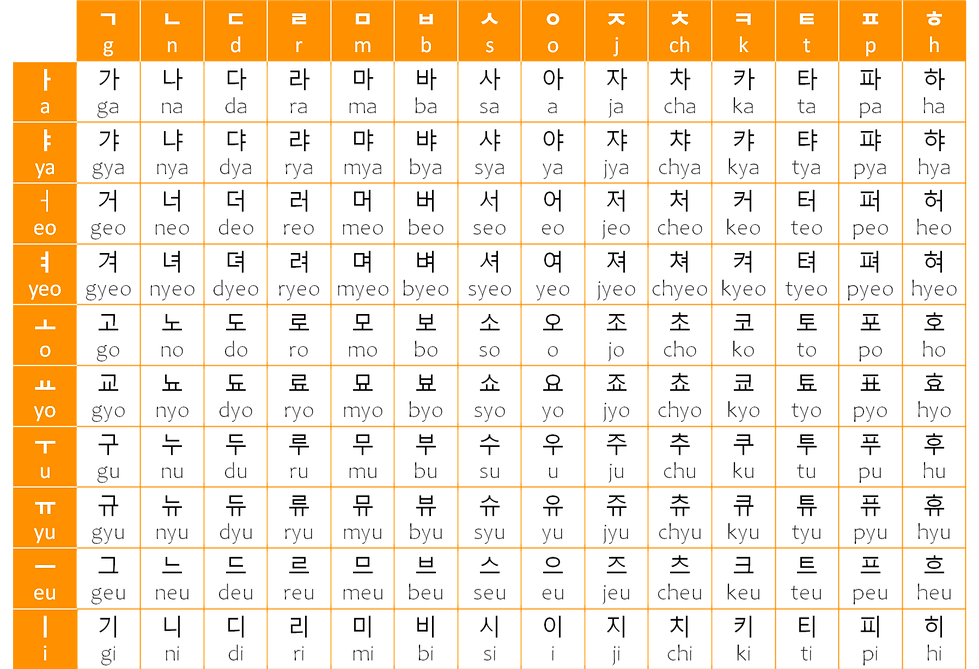
Face-to-face classes - Learn Chinese / Japanese / Korean in London or Manchester - 0208 935 5183

Shortcut to Korean:
How to Learn Korean Alphabet in Just 2 hours!

Welcome to LingoClass. Today we will teach you how to familiarise yourself with the Korean alphabet in less than 2 hours. This might sound like an impossible task but the Korean alphabet is relatively simple and easy to learn. Although 2 hours may seem ambitious, we assure you that if you follow the steps laid out below it’s entirely achievable and many people do it in less time. Since this lesson aims to learn the alphabet, you will acquire the skills necessary to read and pronounce most Korean characters but you may not understand what they mean until you progress further.
Korean characters are called ‘hangul’ and although they may look similar to the untrained eye, they are quite different from Chinese and Japanese characters. There are far fewer characters to remember in Korean. Chinese and Japanese languages don’t actually have an alphabet in the same way we do in English, whereas Korean does. All you need to do to learn to read sentences is memorise these 40 characters and the pronunciation
Alphabetical Characters
The Korean alphabet contains 10 basic vowels and 14 consonants, which can be combined in different ways to form single-character blocks. On top of them, there are 11 complex vowels and 5 double consonants. Similar to English, each character block needs at least one vowel and one consonant so you will never see a single alphabetical character alone outside of the alphabet.
Each character block represents one syllable, for example the consonant ㅅ(s) can be combined with the vowelㅏ(a) to form the syllable character 사 (sa). It's also possible to combine multiple vowels and consonants in one character, for example the characters ㅅ(s), ㅏ(a) and ㅁ(m) to form 삼 (sam).
10 Basic Vowels

ㅏ
a
ㅑ
ya
ㅓ
eo
ㅛyeo
ㅗ
o
ㅕ
yo
ㅜ
u
ㅠ
yu
ㅡ
eu
ㅣ
i
11 Complex Vowels

ㅐ
ae
ㅔ
e
ㅒ yae
ㅖ
ye
ㅘ wa
ㅚ
oe
ㅙ wae
ㅝ wo
ㅟ
wi
ㅞ we
ㅢ
ui
Single Consonants


ㄱ
g
ㄴ
n
ㄷ
d
ㄹ
r
ㅁ
m
ㅂ
b
ㅅ
s
ㅇ
o
ㅈ
j
ㅊ
ch
ㅋ
k
ㅌ
t
ㅍ
p
ㅎ
h
Double Consanants

ㄲ
kk
ㄸ
tt
ㅃ
pp
ㅆ
ss
ㅉ
jj
Rules for Using the Korean Alphabet
Placeholders
In the event a word is represented by a vowel sound alone (as with a or i in English), the character for that vowel is combined with a placeholder consonant:ㅇ. This is silent when spoken but allows the word to be formed using the correct grammar. For example, combining ㅇ(placeholder) and ㅣ(i) produces 이 (still pronounced as i), which means 'teeth' in Korean.
To make things a little more complicatedㅇcan also be used to form the "ng" sound in certain words. As a general rule, if the ㅇ is located on the top or left of the character block then it's silent, if it's on the bottom then it represents "ng" e.g. 성 (seong).
.jpg)
Tall Vowels
Flat Vowels


ㅏ a
ㅑ ya
ㅓ eo
ㅕ yo
ㅣ i
ㅛ yeo
ㅗ o
ㅜ u
ㅠ yu
ㅡ eu
Building Character Blocks
Next, we need to learn how to physically combine each vowel and consonant into a character. The rule for this is simple - if the vowel is tall, as with ㅏ (a) or ㅑ(ya), you add the consonant to the left of the vowel e.g. 사 (sa) or 샤 (sya). However, if the vowel is flat, as with ㅛ (yo) or ㅠ (yu), you add the consonant above the vowel e.g. 쇼 (syo) 슈 (syu).
To G or Not to G?
Another special rule to be mindful of is the ㄱ(g) character. Alone it looks like this: ㄱ. It also takes this form in character blocks using flat vowels e.g. 교 (gyo) and 규 (gyu). However, when combined with tall vowels e.g.ㅏ(a), ㄱ takes on a slightly different appearance. For example ㄱ and ㅏform the character 가 (ga). This can be confusing when starting out but it's important to remember it is the same character and you will understand the rules with practice.

Memorising Korean Characters
Now you understand the logic of how to combine these characters to make sounds, all you need to do to master reading aloud is memorise the sound each alphabetical character represents. Memorising all 24 characters takes different amounts of time for different people but if you concentrate on memorising sets of 3 to 5 at a time, then retest yourself without looking at them, it should take you around an hour to remember them all. We’ve had students do it in half that time and some who take a lot longer. The important thing is to relax and enjoy the experience; you will only have to do it once!
Once you’ve memorised each of the 24 alphabetical character sounds, you can try combining each vowel with each consonant to generate simple Korean syllable characters. Some people like to use mnemonic techniques to help associate the characters with their pronunciation. For example, the character ㅈ(j) looks like a man Jumping. We'll leave the details up to you as mnemonics usually work best when personal to the learner. Regardless of your method, the table below shows what each of the vowel / consonant pairings should look and sound like so refer back to it often to check your progress.

Once you're able to combine each alphabetical character correctly, you have mastered the basics of the Korean alphabet.
Now you can start practising with hangul characters that combine more than two alphabetical characters. This gets easier the more you practice and a basic understanding of grammar and sentence structure will help.
For example:
ㅅ(s) +ㅏ(a) + ㅁ(m) = 삼 (sam)
ㅅ(s) + ㅓ(eo) + ㅇ ("ng") = 성 (seong)
삼성 = Samseong (Samsung).
Take the Korean Alphabet Quiz now!
To understand your learning outcomes, we have a Korean Alphabet quiz ready!
Results are instant and completely free. We often use this form of Korean self-assessment to help students find their current Korean language level quickly and effectively! Eventually, this quiz will help you find the correct level of group class to attend and benefit from it:)
Now you have mastered the ability to pronounce simple characters you can start to practise reading more advanced literature. Why not start by looking at popular News articles on websites such as BBC News or Koreatimes.com.
You can also continue your Korean language journey with us and like-minded people by booking a private tutor or group course at LingoClass' office in London.
